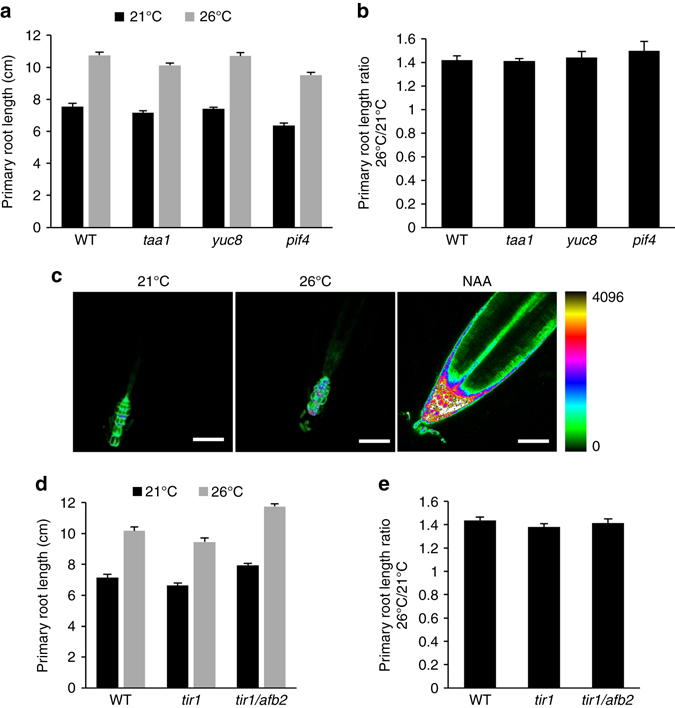Fig. 2.

Elevated ambient temperature responses do not involve auxin. a Primary root length of 15-day-old wild-type plants (WT) and mutants impaired in hypocotyl temperature responses (mean ± s.d., n = 25). The difference between the different genotypes for a given growth temperature is not statistically significant. b Ratio of primary root length from plants grown at 26/21 °C as in a (mean ± s.d., n = 3). The response to elevated growth temperature between the different genotypes is not statistically significant. c Influence of elevated growth temperature on auxin responses using the DR5::GFP synthetic auxin reporter. Exogenous application of 1 µM NAA for 24 h is used as a control. Similar confocal detection settings were used to compare the three growth conditions. The look up table (LUT) allowing color coding of signal intensities is represented on the right. Representative images are shown. Scale bar, 50 µm. d Primary root length of WT and auxin perception mutants grown for 15 days at 21 or 26 °C (mean ± s.d., n = 25). The difference between WT plants, tir1, and tir1/afb2 mutants for a given temperature is not statistically significant. e Ratio of primary root length from plants grown at 26/21 °C as in c (mean ± s.d., n = 3). The response to elevated growth temperature between the different genotypes is not statistically significant
